Cats are full of secrets—and their language is one of the trickiest to crack.
One minute they’re purring on your lap like the world’s happiest roommate. The next, they’re slinking away with a tail flick that says, “Back off.”
Figuring out what your cat really feels is like solving a furry, four-legged mystery.
But once you learn their signs—those little clues in their eyes, tails, and whiskers—you’ll know when they’re content… or when trouble’s brewing.
Get ready to become a feline whisperer with 8 clear ways cats show joy and 7 red flags you shouldn’t ignore.
Purring
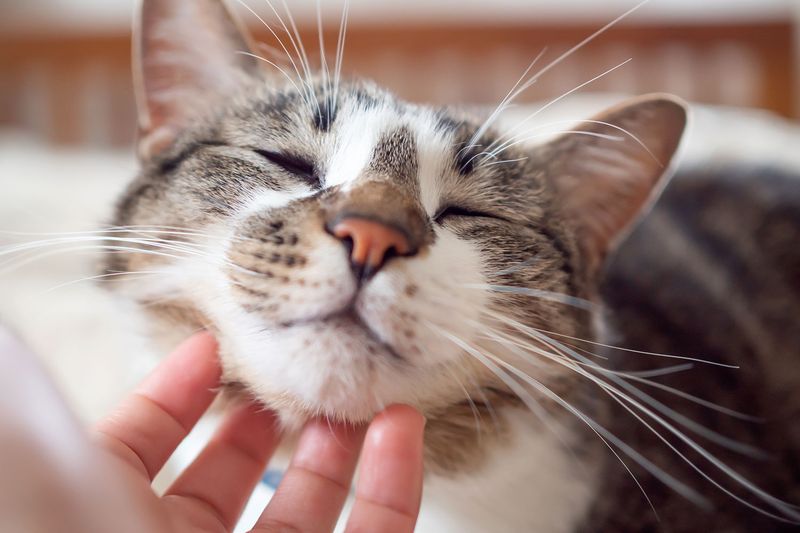
Purring is perhaps the most recognized sign of a happy cat. When they purr, it’s as if they’re singing a song of comfort and contentment. This gentle vibration often occurs when they’re snuggled in their favorite spot or receiving a loving pet from their human.
However, cats also purr when in pain, so context is essential. A cat purring while relaxed and happily kneading with their paws is a sure sign of a satisfied feline.
Understanding the dual-purpose of purring helps discern whether your cat’s vocal symphony signals happiness or discomfort.
Slow Blinking
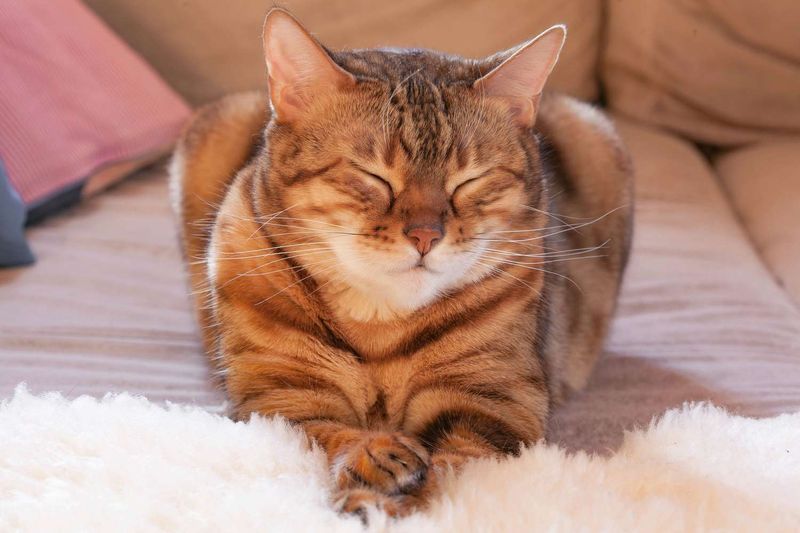
The slow blink is a feline’s way of saying “I trust you.” When a cat looks at you and slowly closes its eyes, it’s akin to receiving a kitty kiss. This gesture is a profound expression of comfort and trust.
Cats reserve slow blinks for those they feel secure around, making it a heartwarming sign of their joy. It’s common to see this behavior in a relaxed environment.
Returning the slow blink can reciprocate the affection, strengthening the bond between you and your furry companion.
Kneading
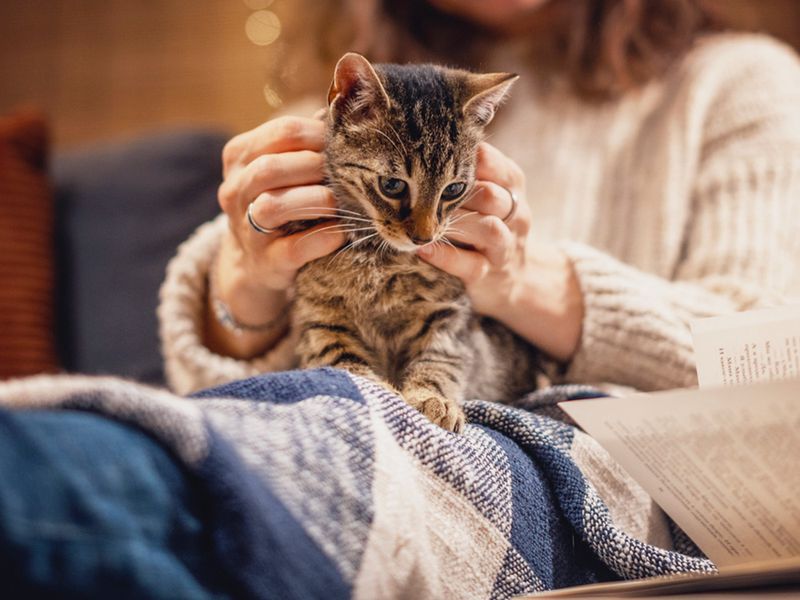
Kneading, often referred to as “making biscuits,” is an adorable display of feline happiness. Cats usually knead when they’re in a state of bliss, reminiscent of their kittenhood when they nursed.
This rhythmic pushing against a soft surface signifies comfort and security, often accompanied by blissful purring. When a cat kneads, it’s a sign they’re relaxed and content.
Observing this behavior, especially on a soft surface like a pillow or blanket, is a delightful indicator of a cat’s well-being and trust in their environment.
Playful Behavior
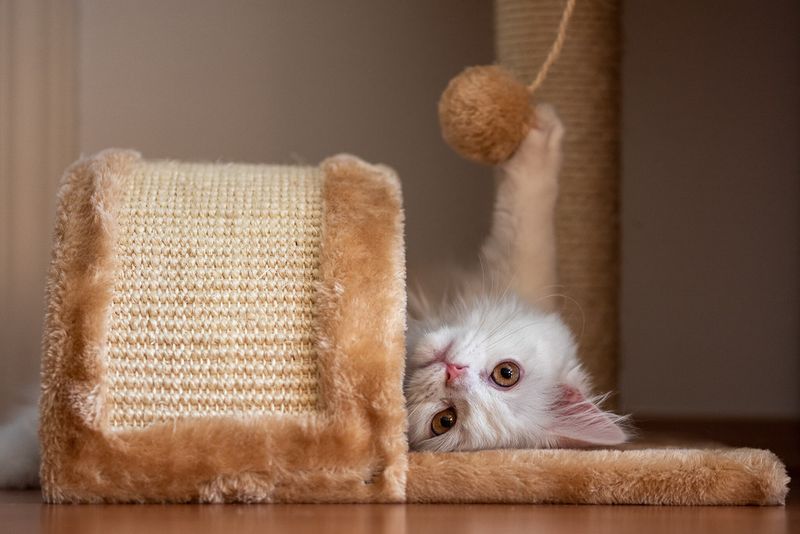
A playful cat is a happy cat. Engaging in spirited antics, like chasing a toy mouse or pouncing on a wiggling string, reveals their joyful mood. Playtime is not just exercise; it’s an expression of their natural hunting instincts.
When a cat eagerly participates in play, it indicates a happy and healthy mental state. Such activities also strengthen the bond between cats and their owners.
Providing ample play opportunities ensures your feline friend remains lively and content in their home environment.
Tail Up

A cat’s tail behaves like a mood barometer. When they walk with their tail held high and a slight curl at the tip, they’re exuding confidence and happiness. This posture is a friendly greeting, signaling all is well.
An upright tail often accompanies a cheerful demeanor, as your cat explores their surroundings with curiosity.
Observing a high tail, especially when a cat approaches you, is a sure-fire sign that they’re content and comfortable in their environment.
Grooming
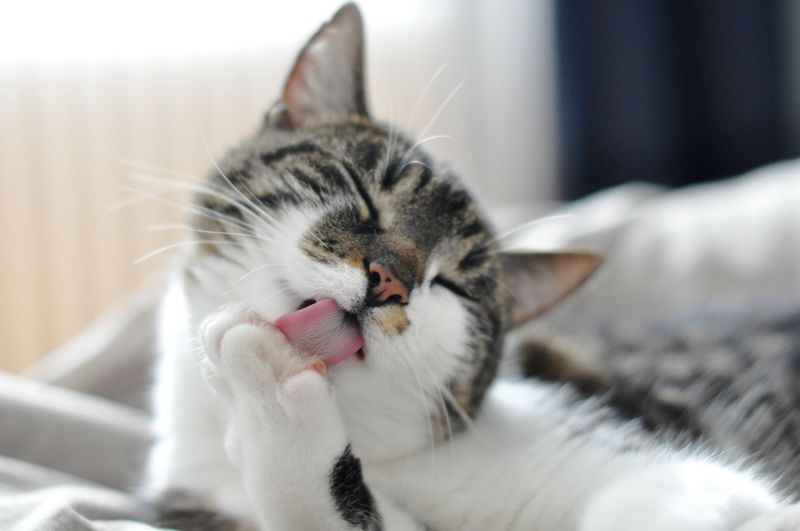
Grooming is a surefire way cats maintain not only their cleanliness but also express contentment. A well-groomed cat is often a happy one, taking pride in their appearance.
Frequent grooming indicates a cat is feeling secure and stress-free. However, over-grooming can be a sign of stress or medical issues.
A balanced grooming routine, where the cat’s coat remains smooth and their demeanor relaxed, is a testament to their well-being and satisfaction with their daily life.
Chasing Sunbeams
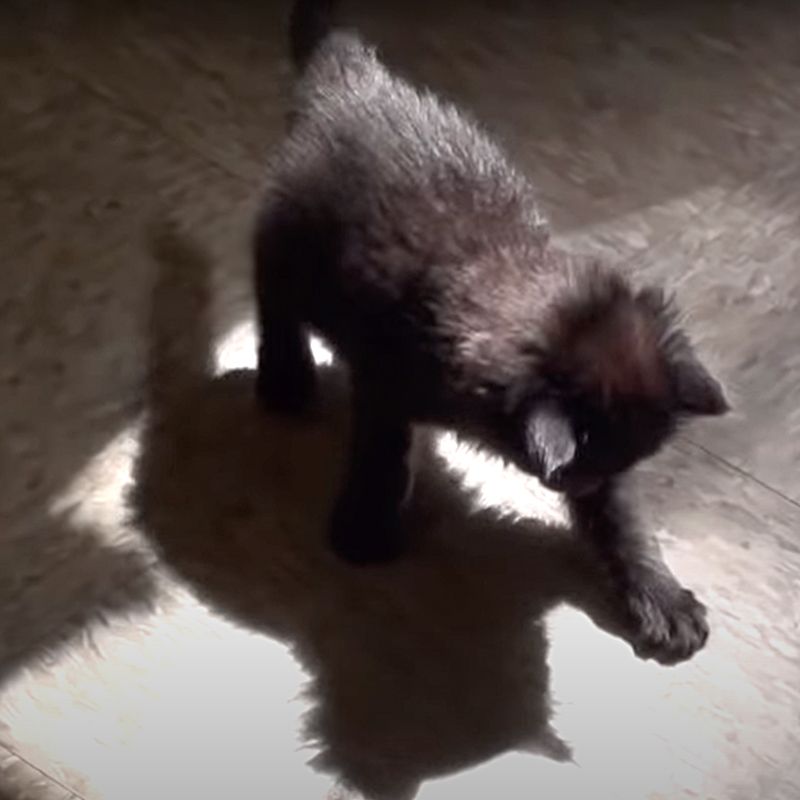
Cats are naturally drawn to warmth, and a sunny spot often becomes their favorite resting place. When you see a cat chasing or playing with sunbeams, it’s a charming display of happiness.
This behavior combines their love for warmth and play, showing they’re comfortable and content. It’s a simple pleasure that brings joy to their day.
Such moments are perfect for observing your cat’s playful nature and how easily they find contentment in everyday scenes.
Affectionate Headbutting
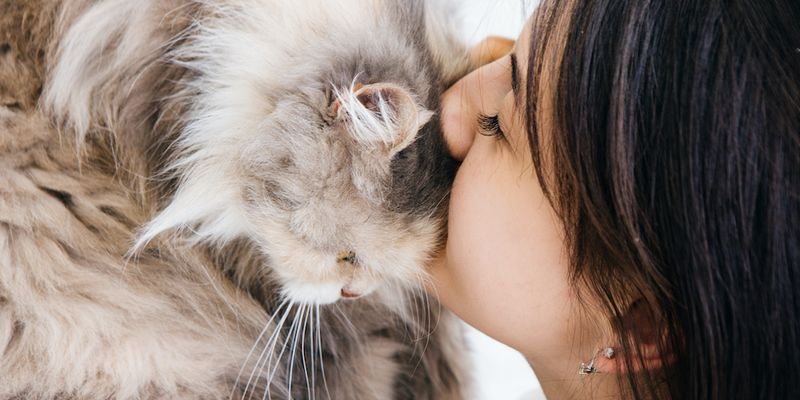
Headbutting, or “bunting,” is an endearing way cats show their affection. When a cat intentionally bumps its head against you, it’s marking you with its scent, claiming you as part of their clan.
This intimate gesture is a sign of deep trust and love, reserved for those they feel closest to.
Experiencing a cat’s gentle headbutt is like receiving their version of a hug, a clear indication of their happiness and comfort in your presence.
Lack of Appetite
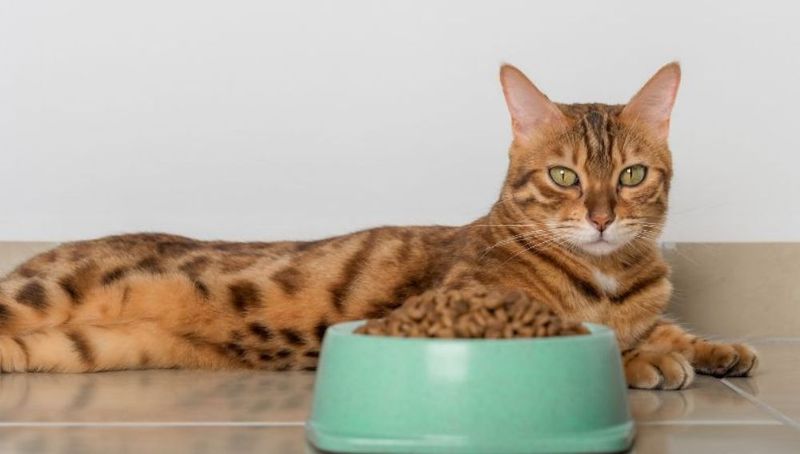
A sudden disinterest in food can signal that something’s wrong with your cat. While occasional pickiness is normal, a prolonged lack of appetite often indicates stress, illness, or dental issues.
Monitoring your cat’s eating habits is crucial. If they consistently turn away from their meals, it might be time for a vet visit.
Ensuring they maintain a healthy diet is essential for their well-being, so pay attention to any drastic changes in their appetite.
Hiding
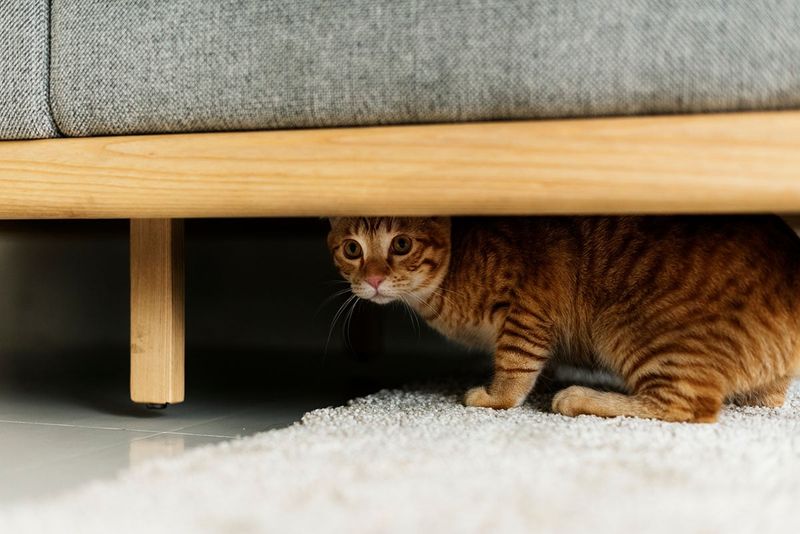
Cats are known to seek solitude when stressed or unwell, making hiding a potential red flag. While some cats naturally enjoy solitude, sudden or excessive hiding may indicate fear or health issues.
If your cat is frequently out of sight or unreachable, it might be time to assess their environment or consult a veterinarian.
Creating a safe and reassuring space for your cat can help mitigate stress and encourage them to emerge from their hiding spots.
Aggression
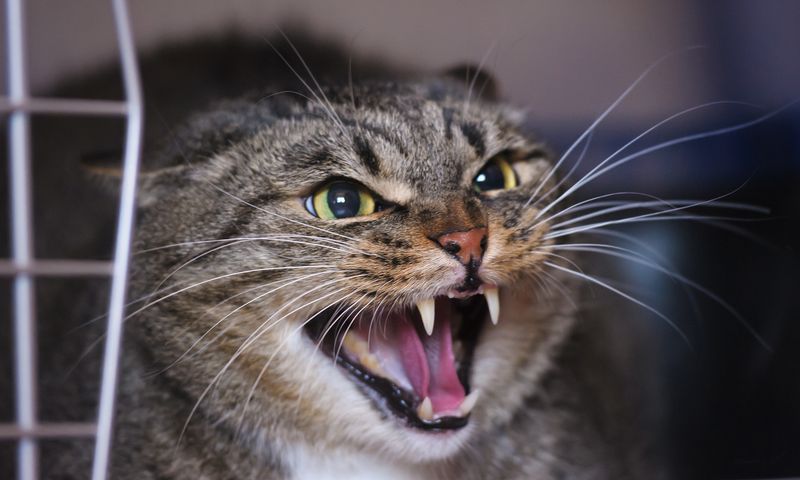
Aggressive behavior in cats can be a sign of discomfort or distress. When a cat hisses, growls, or lashes out, it’s often a reaction to feeling threatened or unwell.
Identifying the root cause, whether it’s environmental changes or health concerns, is crucial in addressing aggression.
Providing a calm and stable environment can alleviate stress, but if aggression persists, seeking professional advice from a vet or animal behaviorist is recommended.
Excessive Meowing
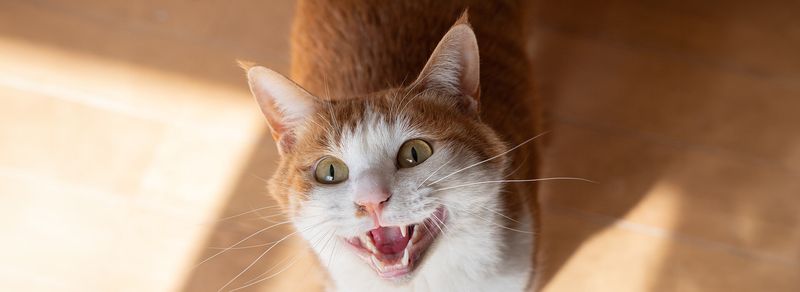
When cats meow excessively, it’s their way of communicating that something might be amiss. Whether they’re seeking attention, expressing hunger, or signaling distress, it’s vital to decode their vocal cues.
A sudden increase in vocalization can indicate a range of issues from loneliness to thyroid problems.
Understanding the context of their meowing is key. If the behavior continues or intensifies, consulting a veterinarian can help uncover and address the underlying issue.
Unusual Litter Box Habits
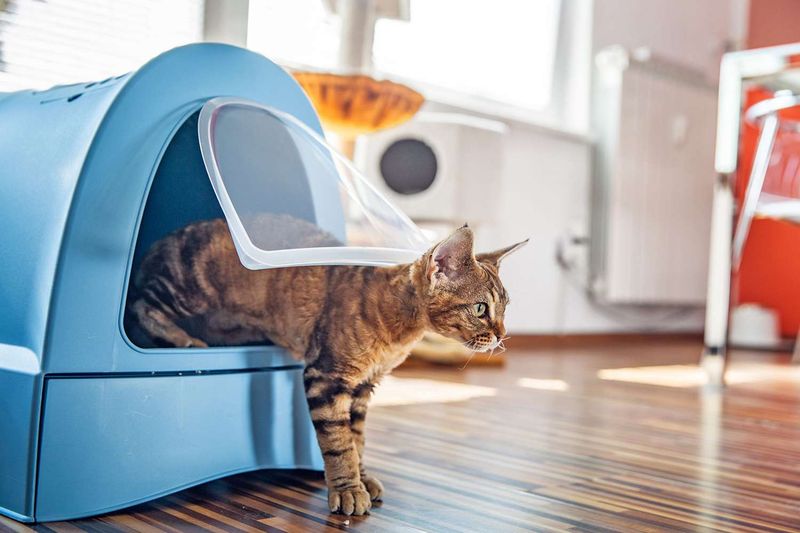
Changes in litter box habits can be a clear sign something’s wrong. If a cat suddenly stops using the litter box, it might indicate urinary issues or stress.
Observing their behavior around the box is essential. Is the cat straining? Are they avoiding it entirely?
Identifying the cause of these changes early can prevent more serious health problems. A visit to the vet can provide clarity and a path forward to restore normalcy in your cat’s habits.
Lethargy
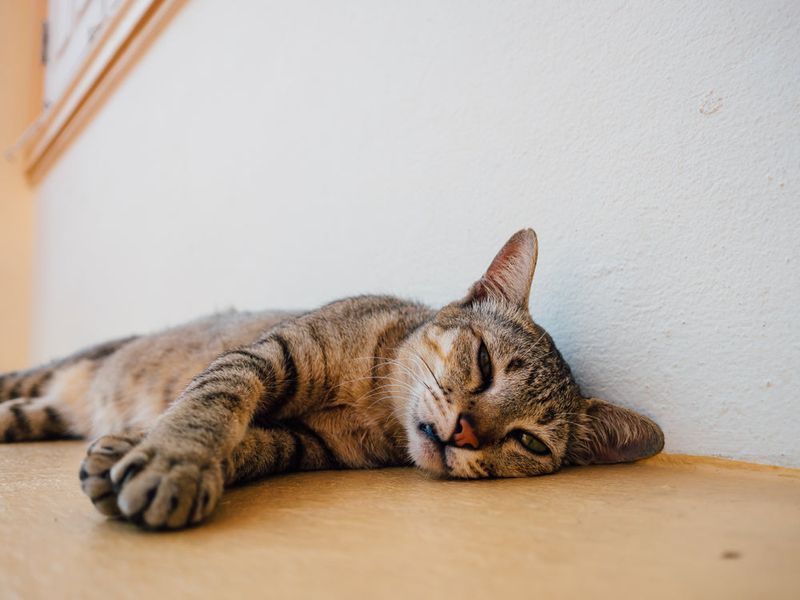
Lethargy is a concerning sign that something may be wrong with your cat. While cats enjoy lounging, excessive sleepiness or unresponsiveness is not typical.
A lethargic cat might be battling an illness or experiencing pain. Monitoring their energy levels and responsiveness to interactions can provide clues.
Addressing this promptly with a veterinarian can help identify and treat any health issues, ensuring your cat returns to their usual playful self.
Weight Loss or Gain

Unexpected weight changes in a cat can be alarming. Whether sudden loss or gain, these shifts often signal underlying health problems.
Cats may lose weight due to thyroid issues or gain due to overfeeding. Regularly checking their body condition can help catch changes early.
Consulting a vet can provide insights into dietary adjustments or health interventions needed to maintain a healthy weight for your feline friend.

